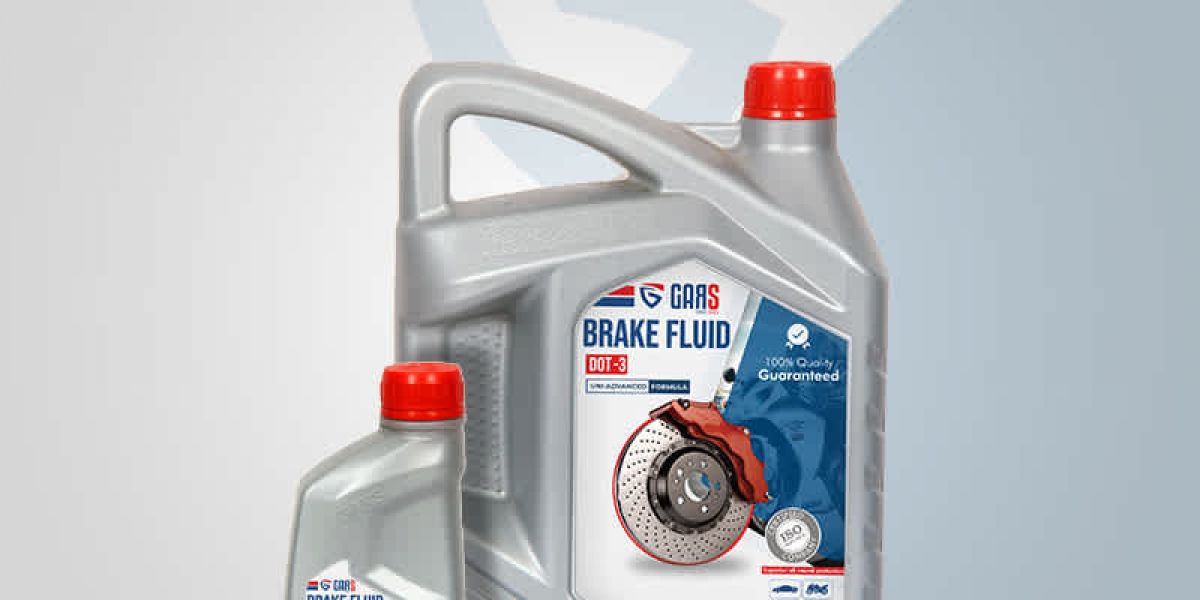Brake oil, also known as brake fluid, is a vital component in a vehicle's braking system. It plays a key role in ensuring that your brakes respond effectively whenever you press the pedal. While most vehicle owners are familiar with engine oil, the importance of brake oil is often overlooked. However, maintaining the right type and level of brake oil is essential for safe and smooth driving.
In this blog, we will explain what brake oil is, how it works, the different types available, signs of poor brake oil, and why regular maintenance is crucial. Whether you own a car, motorcycle, or commercial vehicle, understanding brake oil can help keep your braking system in top condition.
What Is Brake Oil?
Brake oil is a hydraulic fluid that transfers the force from your foot pressing the brake pedal to the actual brakes on your wheels. It operates under high pressure and temperature, and its main job is to ensure that braking force is delivered evenly and instantly.
When the brake pedal is pressed, the brake oil flows through the brake lines to the brake pads or shoes, forcing them to press against the rotors or drums. This process creates the friction needed to slow down or stop the vehicle. Without brake oil, this transfer of force would not occur, and the braking system would fail.
Why Is Brake Oil Important?
1. Efficient Brake Response
Brake oil ensures that your vehicle’s brakes respond quickly and effectively. Even a slight delay or inefficiency in the braking system can be dangerous, especially at high speeds or in emergencies.
2. Prevents Brake Failure
Over time, brake oil can absorb moisture from the air. This can lower its boiling point and lead to vapor formation, which reduces braking efficiency. Regularly checking and replacing the fluid helps prevent this issue.
3. Protects Brake Components
High-quality brake oil contains additives that prevent rust and corrosion in the braking system. This extends the lifespan of brake lines, cylinders, and other components.
4. Maintains Consistent Performance
Brake oil that is in good condition helps deliver uniform braking performance in all conditions, whether you’re driving in the city, on highways, or in mountainous areas.
Types of Brake Oil
Not all brake oils are the same. There are different types based on their chemical composition and performance specifications. The most common types include:
1. DOT 3
This is a glycol-based brake oil suitable for vehicles with normal driving conditions. It has a lower boiling point compared to other types and is not recommended for heavy-duty or high-speed applications.
2. DOT 4
This is an upgraded version of DOT 3 with a higher boiling point. DOT 4 brake oil is commonly used in modern vehicles and offers better performance under stress.
3. DOT 5
This type is silicone-based and does not absorb moisture. It is suitable for special vehicles such as classic cars or military vehicles but is not compatible with DOT 3 or DOT 4 systems.
4. DOT 5.1
Although it shares the DOT 5 numbering, this is actually a glycol-based brake oil. It has a high boiling point and is used in performance or heavy-duty vehicles.
It’s important to refer to your vehicle manual or consult a mechanic before selecting brake oil, as using the wrong type can lead to system damage. Coolant oil plays a crucial role in regulating engine temperature and preventing overheating during long drives.
When to Change Brake Oil
Like engine oil, brake oil needs regular inspection and replacement. While the change interval may vary by manufacturer, most experts recommend replacing brake oil every 2 years or every 30,000 to 40,000 kilometers, whichever comes first.
Signs that your brake oil may need changing include:
Spongy or soft brake pedal
Increased stopping distance
Brake warning light on dashboard
Dark or dirty brake fluid
Unusual noises while braking
If you notice any of these symptoms, it’s best to have your braking system checked by a professional.
How to Check and Maintain Brake Oil
Checking your brake oil is a simple task that can be done during routine maintenance:
Locate the brake fluid reservoir – Usually found near the back of the engine bay.
Check the fluid level – The reservoir has "MIN" and "MAX" markings. The fluid should be between these marks.
Inspect the color – New brake oil is usually clear or light amber. If it's dark or cloudy, it should be replaced.
Top-up if necessary – Use the correct type of brake oil as specified in your vehicle's manual.
Caution: Brake oil is toxic and corrosive. Avoid skin and eye contact, and do not allow it to touch painted surfaces.
Environmental and Safety Considerations
Used brake oil should never be thrown into the trash, drains, or soil. It contains chemicals that can harm the environment and water sources. Dispose of it responsibly by taking it to a local recycling center or automotive shop that handles hazardous waste.
Always store brake oil in a tightly sealed container, away from heat and direct sunlight, and out of reach of children.
Conclusion
Brake oil may not be as well-known as engine oil, but it plays an equally important role in vehicle safety. Ensuring that your brake oil is clean, at the correct level, and of the right type helps maintain the effectiveness of your braking system. Regular checks and timely replacement can prevent accidents, reduce wear on braking components, and offer peace of mind while driving.



